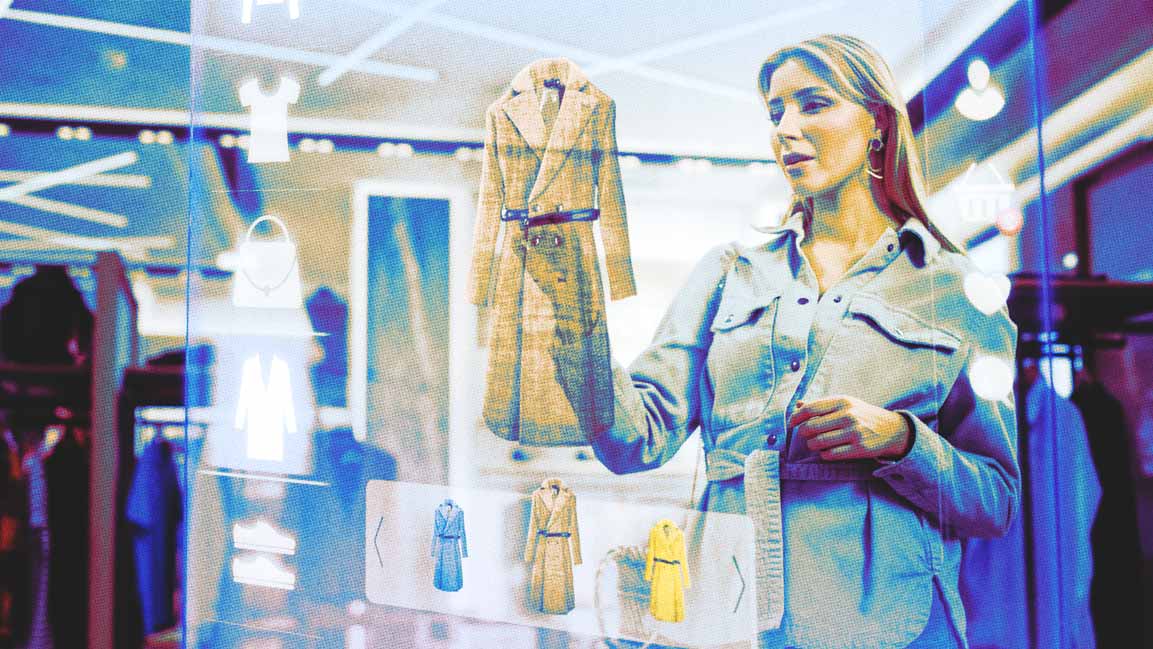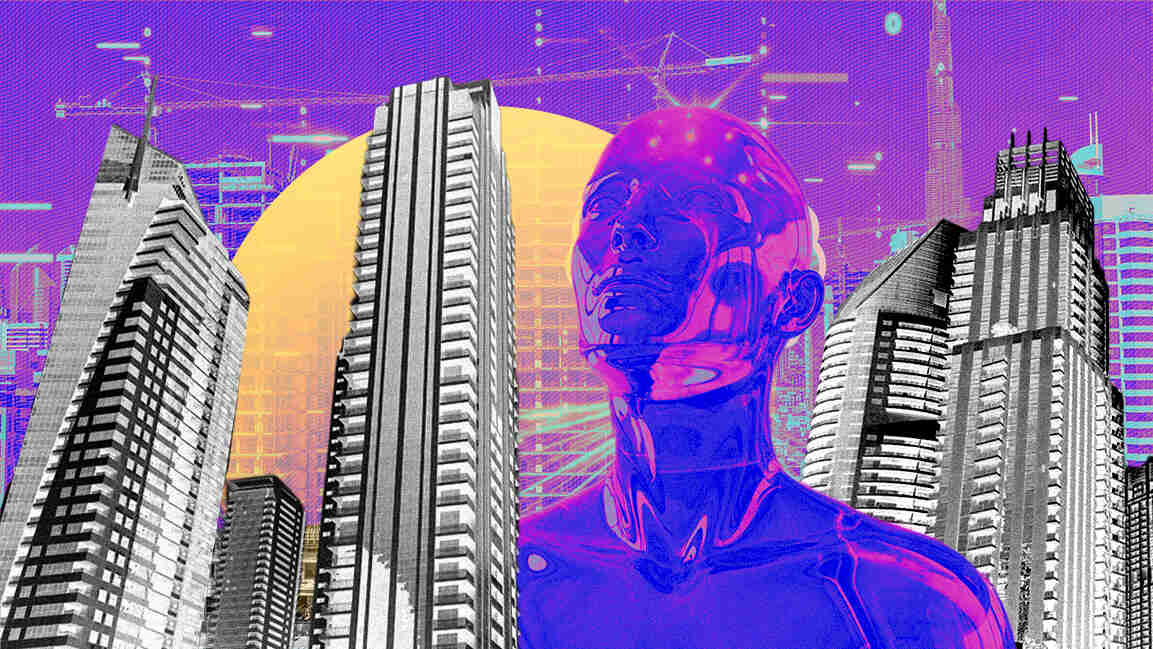- | 9:00 am
This is why the Middle East’s luxury retail is leveraging phygital experience
Using advanced technologies to create a seamless blend of physical and digital experiences is crucial for navigating an increasingly competitive landscape.

In the GCC region, luxury is pervasive and can be attributed to a growing high-income population driving demand. According to Statista, the luxury goods market has an expected annual growth rate of 3.54% between 2024 and 2028. For this year alone, the region is projected to generate a revenue of $6.97 billion for the market.
Online sales are expected to contribute 9.3% of this figure. Luxury brands are looking to leverage digital solutions further to navigate the high level of competition.
“The luxury retail segment is perhaps where the pressure to create unforgettable experiences is the greatest,” says Laith Al-Bazirgan, Head of Retail, MENA, Endava. “These brands aren’t just selling products; they’re selling a lifestyle. This includes the purchase process and all the fancy trimmings –in-store or online. So, when blending the digital world with the physical one, many in this segment set benchmarks for the retail industry.”
Luxury retail brands are embracing a mix of digital and physical experiences to elevate customer interactions and bolster their brand presence. “The primary motivation behind a lot of this integration is branding. By blending digital and physical realms, brands enhance their image and authenticity,” says Jason Blunden, Group Director of MediaCubed, a creative agency and production house.
GROWING INVESTMENTS AND BENEFITS
Lisa Lee, vice president of Perfect Corp, says AR technology is at the heart of many successful “phygital” initiatives that hundreds of brands have adopted to deliver a personalized beauty consultation experience proven to build brand loyalty, increase customer satisfaction, and drive sales.
The demand for such solutions is growing. Blunden confirms this, drawing from their work creating virtual reality exhibitions for many clients and the growing demand for 360-degree virtual tours, which allow prospective customers and buyers to explore venues, facilities, and properties from anywhere in the world.
Undoubtedly, AI is driving a revolution in luxury retail, says Lee. “Thanks to these tools, shoppers can virtually try on any luxury products. We’ve partnered with leading luxury brands to develop AR try-ons for watches, necklaces, sunglasses, makeup, and more, allowing customers to experiment and shop confidently before ever stepping into a store.”
Emphasizing the benefits of such investments, Al-Bazirgan discusses their collaboration with fashion brand Rebecca Minkoff to design and build their Connected Store, which combines brick-and-mortar retail and e-commerce. “Through interconnected interfaces on custom hardware, including massive touch displays, smart mirrors, and employee tablets, all fully integrated with inventory, CMS, and CRM systems, the impact was a 300% increase in footfall,” he says.
CREATING A SEAMLESS EXPERIENCE
However, creating a seamless omnichannel customer experience is crucial to get the most out of these technologies. Al-Bazirgan says, “There’s plenty of tech that goes unnoticed but plays a vital role in creating the luxury experiences that are the hallmark of these brands.
For example, customers can use a brand’s app to book appointments, get notified when their favorite items are back in stock, or receive targeted offers based on their preferences and purchase history. This allows luxury brands to maintain a consistent, high-end experience across all touchpoints, ensuring customers feel valued and appreciated whether they shop online or in a physical store.”
Integrating technologies allows for a fully immersive experience, says Blunden. “These technological advances are great for brand image, but keeping up with technology is crucial.”
PREDICTING PURCHASES
Of course, data is at the heart of all these technologies — customer data and analytics are everything for retailers. “Through AI and predictive analytics, they are no longer left guessing what customers want—they can predict it,” Al-Bazirgan says, adding that correctly collating and analyzing this data enables retailers to step into the shoes of their customers and figure out what they’re likely to do next using tools like logistic regression or decision trees, to fine-tune predictions for greater accuracy. “It’s all about using predictive analytics to keep customers happy and coming back for more,” he says.
Brands are leaning far more into data to meet customers’ needs, using metrics such as app dwell time, average order rate, basket size, and order flow. “The behavior they see on their websites and applications greatly influences how they adapt their services. Brands tailor app experiences by customers depending on their previous interests and baskets, which means customers feel the same personalized, tailored experience they would get in the store,” says Blunden.
For Lee, personalization should go way beyond purchase history or user behavior. She adds that the next step in the personalization journey is using LLM and GPT technologies.
Al-Bazirgan, however, highlights the importance of oversight in this context. “It’s not just about crunching numbers; it’s also about having the right people on board to make sense of it all,” he says. “This means having skilled professionals, armed with the right tools, who can take all that data and turn it into actionable insights that drive our business forward.”
FUTURE OF PHYGITAL RETAIL
Against this backdrop, it is clear that the adoption of technologies shows no sign of slowing down. In the coming years, AI and data analytics will become increasingly important for luxury retailers looking to deliver hyper-personalized experiences and optimize operations. Additionally, technologies that provide transparency and traceability in the supply chain, such as blockchain, NFTs, and digital identity solutions, will continue to grow in prominence. “These tools can help luxury brands prevent counterfeiting, track merchandise, and advertise exclusivity by capitalizing on a finite supply,” Al-Bazirgan says. “As luxury shoppers increasingly prioritize sustainability and conscious consumption, these technologies will become critical for demonstrating brand authenticity and responsibility.”
Digital technologies will continue to evolve in the coming years, offering new opportunities for brands to engage customers, “Technologies like augmented drone footage have the potential to revolutionize marketing efforts further, providing dynamic perspectives and enhancing virtual experiences,” says Blunden. “The seamless integration of these technologies will redefine luxury retail.”
At the end of the day, it’s about more than just making sales, says Al-Bazirgan; it’s about building relationships and creating memories that keep our customers coming back for more. “The luxury brands that will thrive in the coming years will be those that will embrace the power of data, AI, and emerging technologies to deliver hyper-personalized experiences that deepen emotional connections with their customers.”
Fast Company Middle East’s Next Big Things in Retail Summit, which will be held on November 12 in Riyadh, will cover key topics in retail, such as experiential retail, traditional store optimization, and e-commerce strategies like social commerce and hyper-personalization. It will also discuss how design and innovation will play a role in reshaping the retail landscape.
Delegates can register here.







































